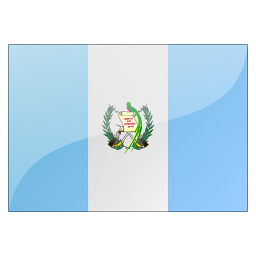



Quiché is the homeland of the K'iche' people, though other groups form the fabric of this culturally diverse region, most notably the Ixil of the eastern Cuchumatanes mountains. Most visitors who come to this largely forgotten pocket of the country are on a jaunt to the famous market at Chichicastenango. Similarly captivating commerce is conducted in the less trammeled territory of Santa Cruz del Quiché, the departmental capital to the north. On its outskirts lie the mysterious ruins of K'umarcaaj, the last capital city of the K'iche'. Adventurous souls push further north for Nebaj, heart of the culturally vibrant Ixil Triangle, with myriad hiking opportunities.

The busiest and most built-up lakeside town, Panajachel ('Pana') is the gateway to Lago de Atitlán for most travelers. Strolling the main street, Calle Santander – crammed with travel agencies, handicraft hawkers and rowdy bars, dodging tuk-tuks all the way – you may be forgiven for supposing this paradise lost.

Quetzaltenango is Guatemala's second city. It has a great atmosphere – not too big, not too small, enough foreigners to support a good range of hotels and restaurants, but not so many that it loses its national flavor. The city center has an interesting mix of architectural styles – once the Spanish moved out, the Germans moved in and their architecture gives the zone a somber, even Gothic, feel.

Lago de Atitlán leaves even the most seasoned travelers marveling. Fishers ply the lake's aquamarine surface. Fertile hills dot the landscape, and over everything looms the volcanoes, permeating the entire area with unique and striking beauty. It never looks the same twice. No wonder many have fallen in love with the place and made their homes here.

Vast, sparsely populated and jungle-covered, Guatemala's largest and northernmost department is a wonderland of exploration. Whether it's the spectacular architectural achievements of the Classic Maya, the bounty of the forest or the chance to lounge lakeside that inspires you, it's all here in abundance.

Santiago Atitlán is the largest of the lake communities, with a strong indigenous identity. Many atitecos (as its people are known) proudly adhere to a traditional Tz'utujil Maya lifestyle. Women wear purple-striped skirts and huipiles embroidered with colored birds and flowers, while older men still wear lavender or maroon striped embroidered pants. The town's cofradías (brotherhoods) maintain the syncretic traditions and rituals of Maya Catholicism. There's a large arts and crafts scene here too. Boatbuilding is a local industry, and rows of rough-hewn cayucos (dugout canoes) are lined up along the shore. The liveliest days to visit are Friday and Sunday, the main market days, but any day will do.

Lívingston is unlike anywhere else in Guatemala. Its Garifuna people, their colors, culture, rhythms, flavors, and disposition, are the best reason to visit – nowhere else in Guatemala will you find such a fun and relaxed vibe. But it's not just the people: good beaches are nearby and the slow-and-easy take on life is enchanting. Here boats lie derelict in picturesque decay; people paddleboard or kayak lazily amid refreshing ocean breezes; and pelicans soar overhead as happy hour starts in late afternoon. It's just lovely.

With its pastel houses cascading down from a central plaza to the emerald waters of Lago de Petén Itzá, the island town of Flores evokes Venice or somewhere Mediterranean. A 0.3-mile (500m) causeway connects Flores to its humbler sister town of Santa Elena on the mainland, which then merges into the community of San Benito to the west. The three towns actually form one large settlement, often referred to simply as Flores.

Santa Cruz fits the typically dual nature of the Atitlán villages, comprising both a waterfront resort (home of the lake's scuba-diving outfit) and an indigenous Kaqchiquel village. The village is about 0.35 miles (600m) uphill from the dock (there are tuk-tuks if you don't fancy the stiff walk). It's a lovely spot, with relaxing accommodations, activities on the water and a complete lack of hustle.

The highlands – El Altiplano – stretch from Antigua to the Mexican border; they comprise Guatemala's most breathtaking region by some degree. Maya identity is stronger here than anywhere in the country and over a dozen distinct groups dwell within the region, each with its own language and clothing. Indigenous tradition blends most tantalizingly with Spanish, and it is common to see Maya rituals taking place in front of and inside colonial churches.